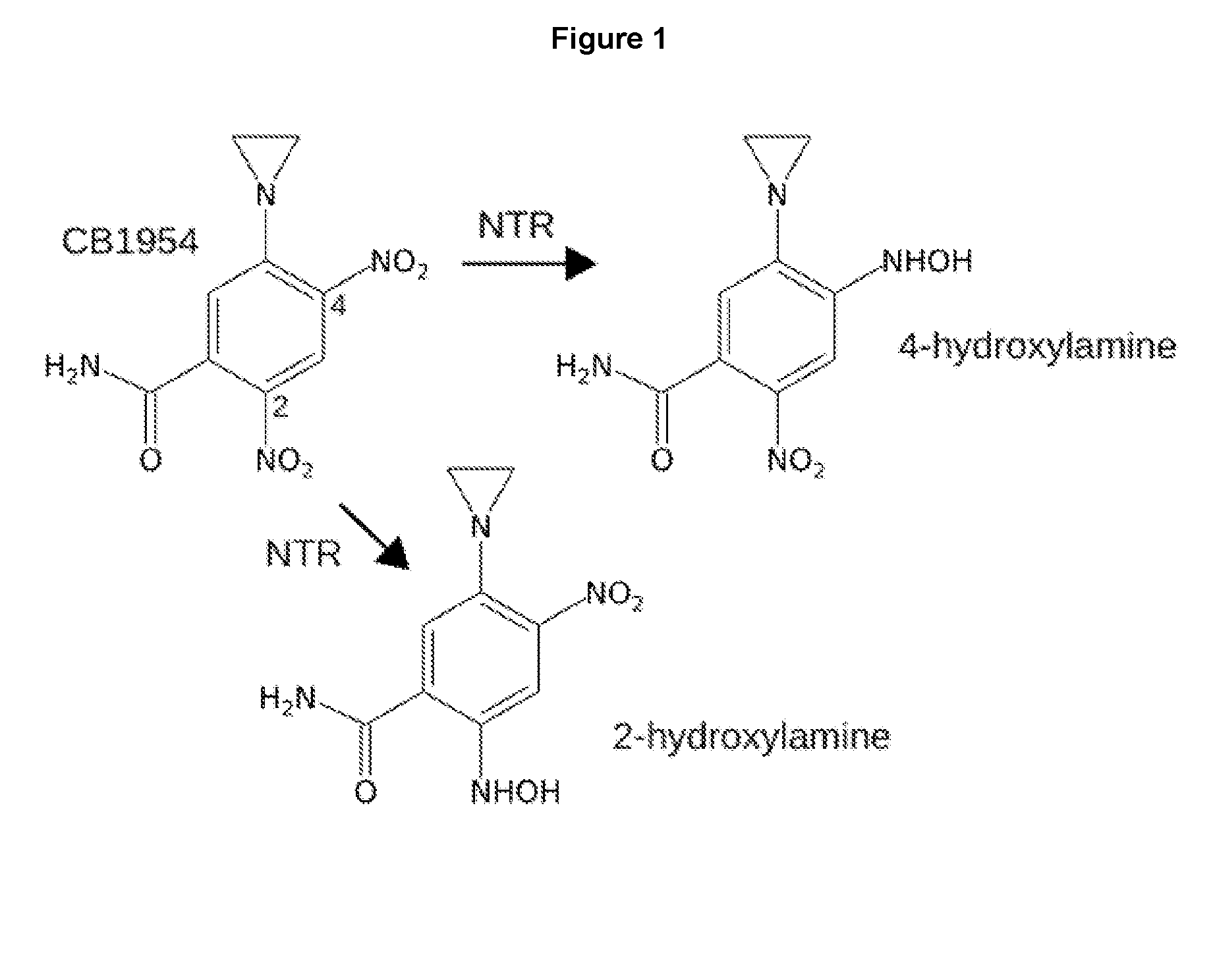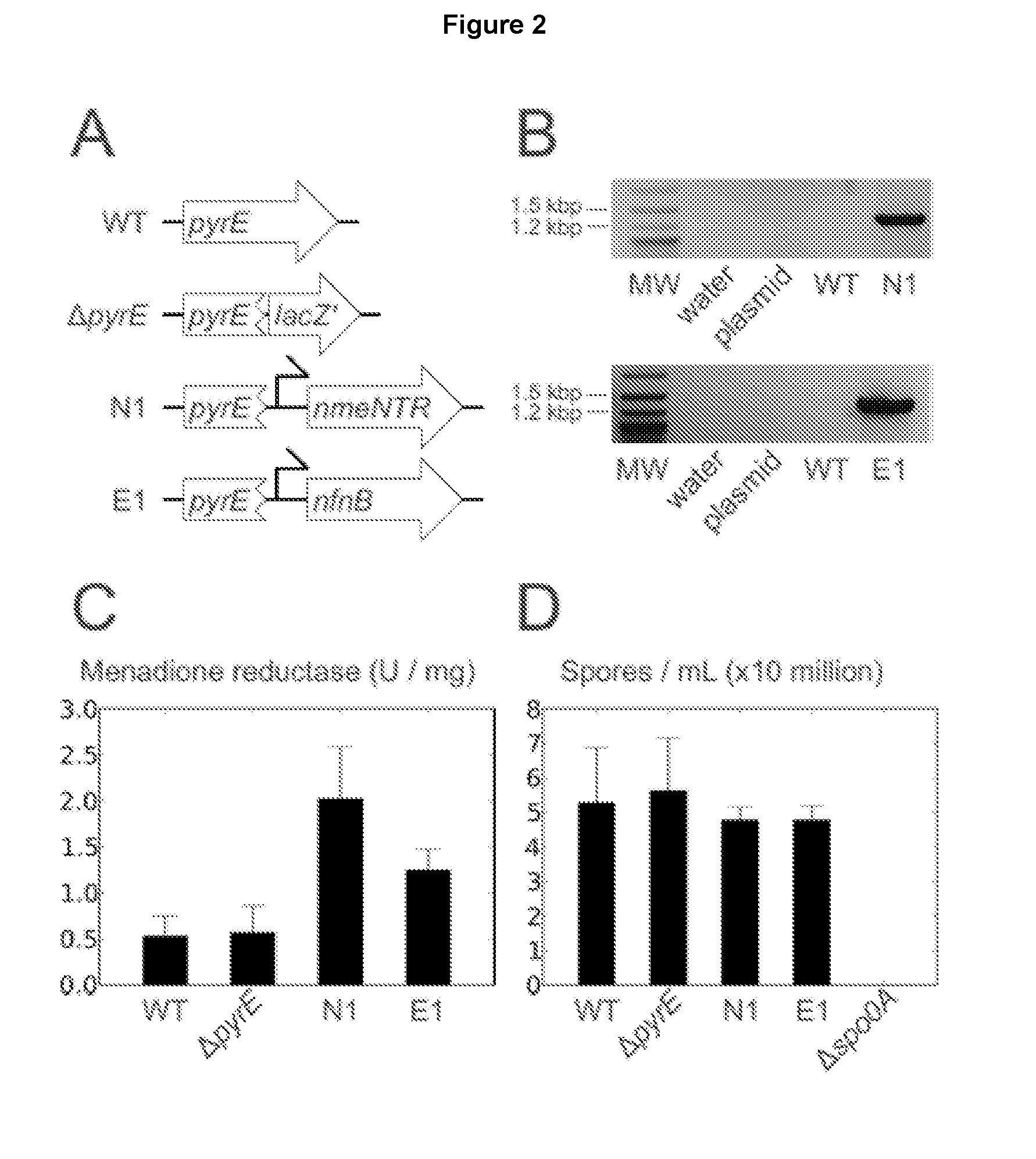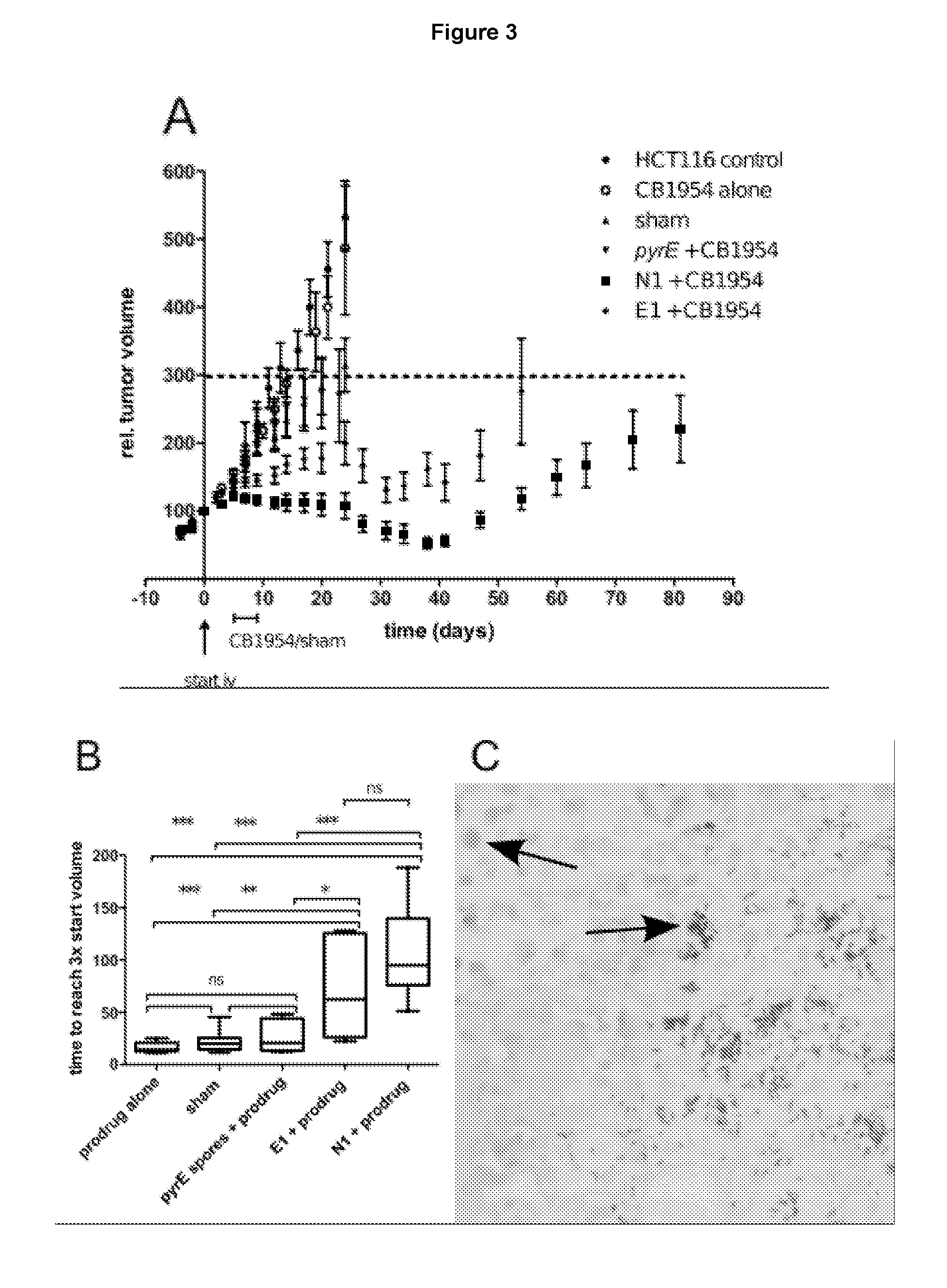Treatment for cancer
a cancer and cancer technology, applied in the field of cancer treatment, can solve the problems of serious problems with the safety of viral vectors, and achieve the effect of preventing its growth and improving the kinetics of cb1954 activation
- Summary
- Abstract
- Description
- Claims
- Application Information
AI Technical Summary
Benefits of technology
Problems solved by technology
Method used
Image
Examples
examples
Introduction
[0181]Spores of some species of the strictly anaerobic bacteria Clostridium naturally target and partially lyse the hypoxic cores of solid tumours, which tend to be refractory to conventional therapies. The anti-tumour effect can be augmented by engineering strains to convert a non-toxic ‘prodrug’ into a cytotoxic drug specifically at the tumour site by expressing a prodrug-converting enzyme (PCE). Safe doses of the favoured prodrug CB1954 lead to peak concentrations of 1-10 μM in patient sera, but at these concentration(s) known nitroreductase (NTR) PCEs for this prodrug show low activity. Furthermore, recombinant PCE-expressing Clostridium strains that are efficacious, stable and disabled have not been reported. Here a novel nitroreductase, namely NmeNTR, is identified from Neisseria meningitides, which is able to activate CB1954 at clinically-achievable serum concentrations (KmCB1954=2.47 μM). An NmeNTR expression cassette, which does not contain an antibiotic resista...
PUM
| Property | Measurement | Unit |
|---|---|---|
| Fraction | aaaaa | aaaaa |
| Molar density | aaaaa | aaaaa |
| Dimensionless property | aaaaa | aaaaa |
Abstract
Description
Claims
Application Information
 Login to View More
Login to View More - R&D
- Intellectual Property
- Life Sciences
- Materials
- Tech Scout
- Unparalleled Data Quality
- Higher Quality Content
- 60% Fewer Hallucinations
Browse by: Latest US Patents, China's latest patents, Technical Efficacy Thesaurus, Application Domain, Technology Topic, Popular Technical Reports.
© 2025 PatSnap. All rights reserved.Legal|Privacy policy|Modern Slavery Act Transparency Statement|Sitemap|About US| Contact US: help@patsnap.com



